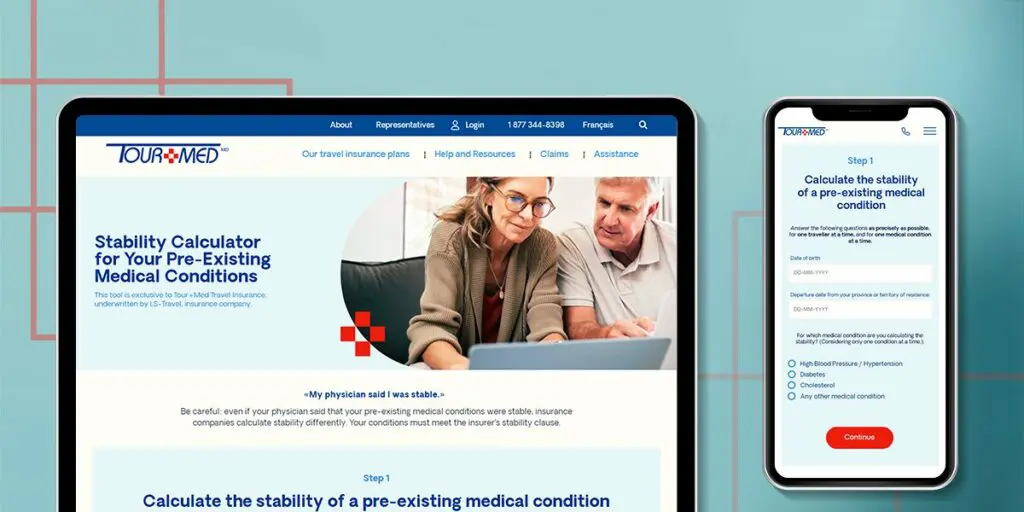When planning a trip abroad, especially for long periods, it is crucial to ensure that you have adequate coverage in case of a medical emergency. If you have pre-existing medical conditions, the concept of medical stability is key to being properly protected.
But what does medical stability mean, and how can you tell if your condition is stable? Discover everything you need to know with the help of Tour+Med’s exclusive stability calculator.
What is Medical Stability?
Medical stability is a principle used by insurers to determine if a pre-existing medical condition is ‘’sufficiently under control’’’ to be covered during your trip. Simply put, a condition is considered stable if it has not required any changes to your treatment, any adjustments to your medication, if no new symptoms have occurred, or if no recommendations have been made, within a given period before your departure.
For example: If you have diabetes and there have been no changes to your treatment or complications in the 2 months prior to your trip, your condition may be considered stable by your insurer. However, if your medication dosage or frequency was altered during those 2 months, your condition would be deemed unstable by the insurer, and it would be excluded from coverage during your trip.
Why Is Stability So Important?
If a medical condition is not stable at the time of your departure, the costs related to that condition may not be covered by your insurance in the event of an emergency. This means you could face significant medical expenses if you require care for that condition during your trip.
Tip: Before you travel, make sure you fully understand whether your condition is considered stable according to your insurer’s criteria.
How to Calculate the Stability of Your Condition?
Tour+Med offers a simple and easy-to-use stability calculator. This tool allows you to check if your condition is stable, considering the period defined by your insurance (for example, 2, 3, or 6 months before your trip).

How to Use Tour+Med’s Stability Calculator?
1. Access the stability calculator button on our website.
2. Answer a few quick questions about your recent medical history.
3. Get an instant result on the stability of your condition, which will help you make an informed decision before purchasing your insurance.
Possible Scenario: John, a Snowbird, suffers from high blood pressure. Before heading to Florida, he uses the stability calculator. Thanks to the calculator, he discovers that a recent adjustment to his treatment makes his condition unstable. He decides to delay his trip by a few weeks to meet the insurer’s required stability period, ensuring that he will be covered for this condition during his trip.
Conclusion :
Medical stability is a crucial factor for the insurance company when analyzing claims. Make sure you are properly covered during your trip, especially if you have a pre-existing condition.
With Tour+Med’s stability calculator, you can quickly verify whether your pre-existing condition meets the insurer’s stability requirement, ensuring that it is covered during your trip. Take a few minutes to check the stability of your condition and travel with peace of mind!
